Explore local projects
Find a classroom near you and help teachers and students get the resources they need.
See map


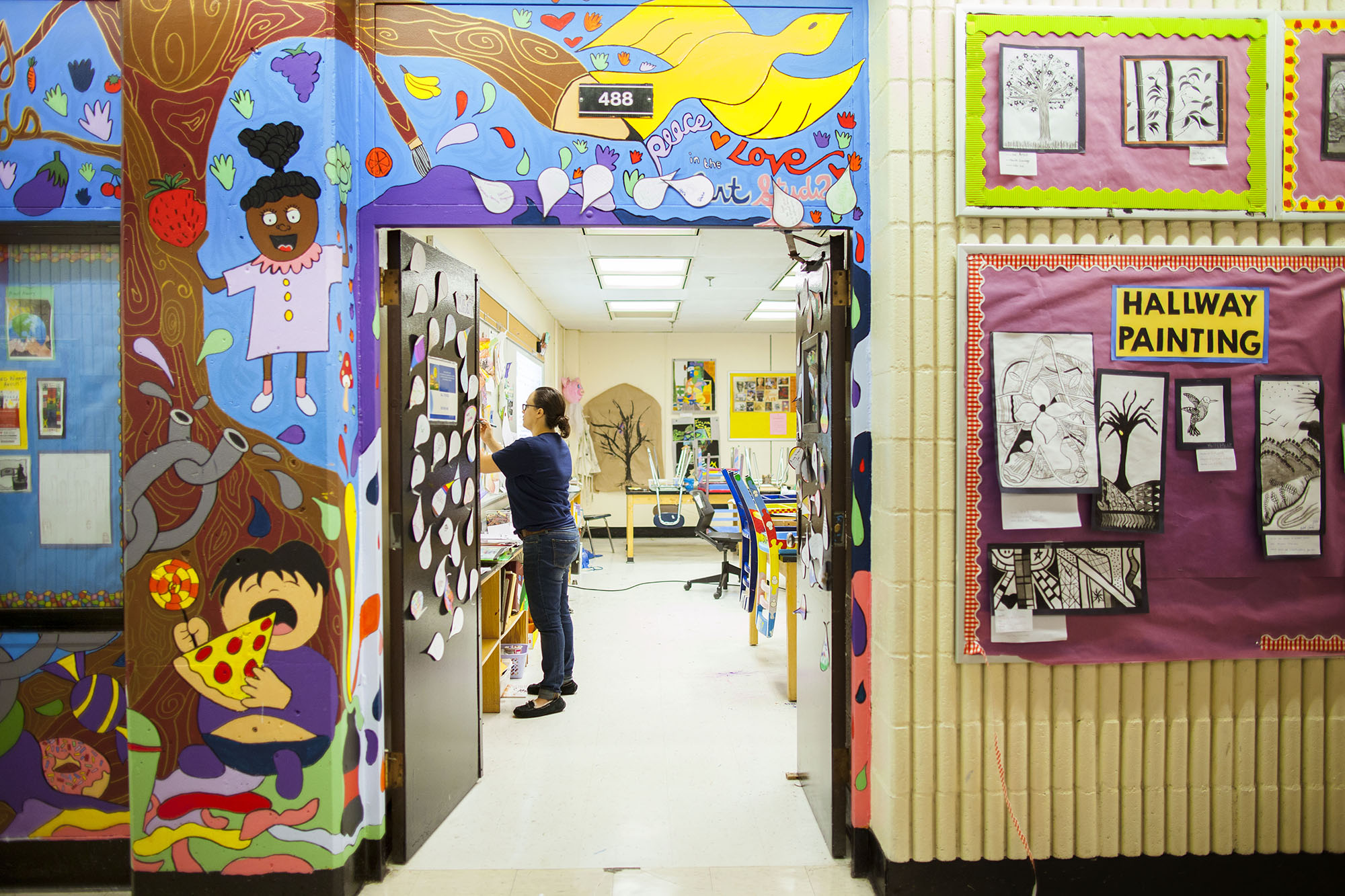
Three ways to invest in students and teachers on DonorsChoose and make a a major impact — from supporting a whole school to DAFpay!
The most popular way to give on DonorsChoose is to support a classroom project. But did you know there are ways to give that go beyond a single classroom? For philanthropic gifts that invest in brighter futures for public school students, here are three high-impact giving strategies to make part of your charitable giving plan.
Let’s talk about donor-advised funds, also known as “DAFs.” A Donor-Advised Fund (DAF) is a charitable giving account. You make a tax-deductible contribution to your account, and the balance stays invested in the market, growing tax-free, until you’re ready to give to your favorite non-profit.
Check out DAFPay today — and if you haven’t set up a DAF yet, this is a really great time to begin. (You can start one with as little as $20).
Did you know your DonorsChoose gift can go to a school, not just a classroom? Whether it’s a school in your local community, your alma mater, or a relative’s school, you can give whether or not they have current projects on our site. In fact, giving when they don't have projects let's the teachers know the support is there for them when they need it.
Search for a school you want to champion and make a lasting investment for all of its students.
When you want your generosity to address the biggest, most critical needs in education, DonorsChoose Funds are your answer. Our funds are designed for those who want to make a larger, more comprehensive impact across schools and classrooms.
When you give to a DonorsChoose fund, your gift is pooled with gifts from other members of the DonorsChoose community. These funds support classrooms, fuel key programs, and fulfill urgent needs throughout the year as a powerful, collective force.
Explore the fund of your choice: Public Schools | Equity | Basic Needs
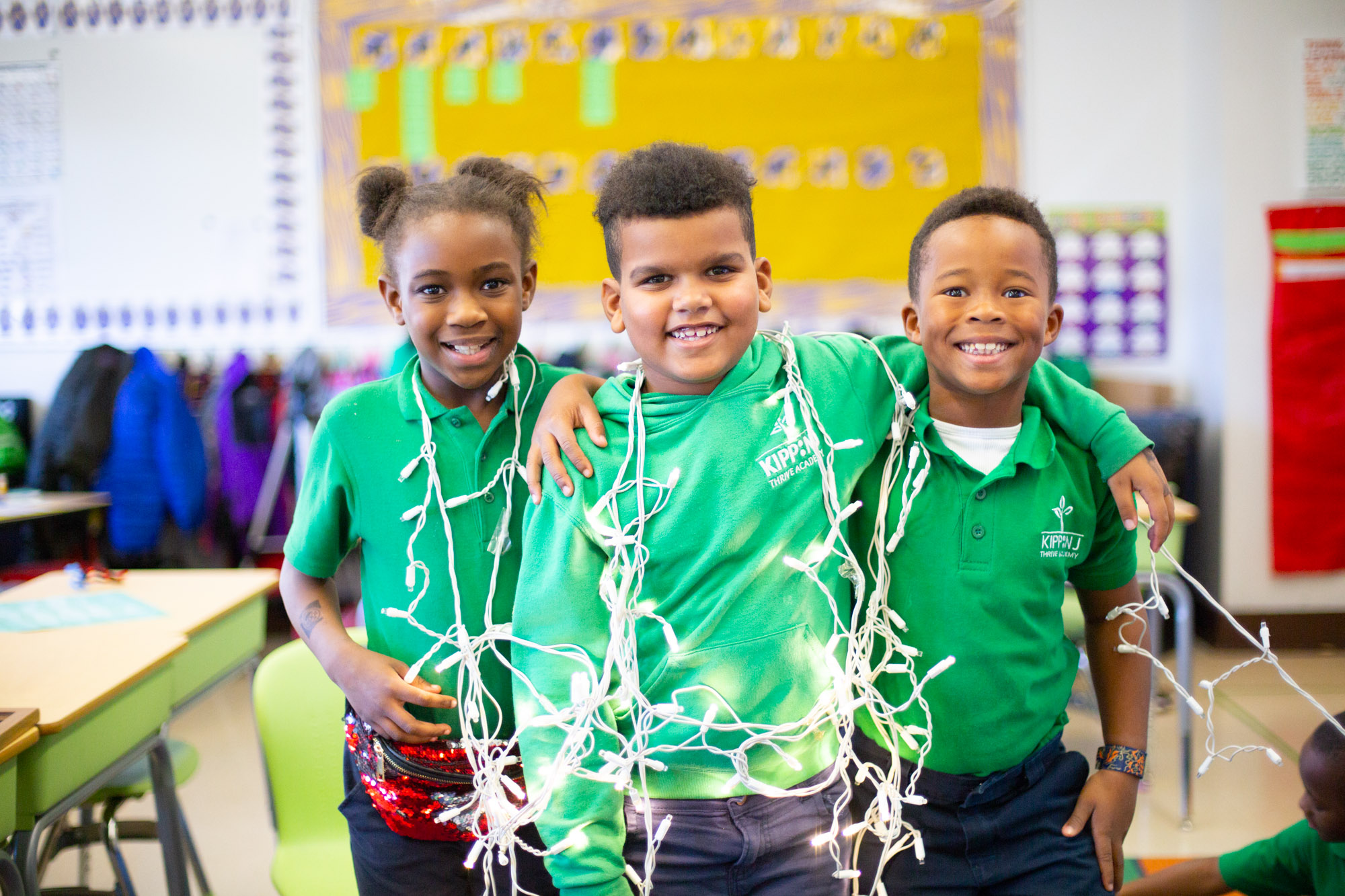
Support student learning and connect with stakeholders this holiday season
The end of the year is all about generosity, and there's no better way to make a difference in your community than by supporting teachers. When companies and foundations partner with DonorsChoose, they can make a big impact on classrooms nationwide, all while quickly and effectively meeting their year-end impact goals.
Check out how four of our partners harnessed the power of the giving season to hit their impact and business goals!
Ready to get involved? Contact our team to see how we can partner up to support teachers before the year comes to a close.
Social media can be a powerful tool for spreading good. As the holiday season kicked off in November, Nature Made discovered just how powerful. First, they fully funded teachers’ requests for health and wellness supplies for students in public schools where the need was highest. To drive awareness of students’ ongoing needs of public school classrooms, they equipped six influencers with $5,000 DonorsChoose gift codes to support the classrooms of their choosing.
As the year came to a close, Mazda wanted to make an impact in their local communities by supporting educators nationwide and funding DonorsChoose projects to bring essential resources to classrooms. Mazda matched $250,000 in donations to Warmth, Care, and Hunger projects on DonorsChoose, getting students essential items like warm coats, toothpaste, and healthy snacks. To deepen their community connection, Mazda worked with funded schools to organize celebrations with and for teachers.
Troutman Pepper Locke recognizes the transformative power of education in building strong communities. Each year during the holiday season, the firm honors its clients through charitable contributions, and in 2024 partnered with DonorsChoose to make donations to classrooms in 28-cities where the firm has offices. The firm was proud to support educators and students by providing essential resources that would help them start the new year set up for educational success.
The McChord Family Foundation had a vision: equip teachers and students in Massachusetts with everything they needed for a successful new year. So, on December 31, the foundation fully funded every teacher's project on DonorsChoose across the state. More than 1,100 teachers in 448 schools were able to stock their classrooms with everything from clarinets for young musicians, to flexible seating for active learners, to STEM kits for future innovators.
We’re excited to work with companies and foundations who are looking to make an impact before the end of the year. Connect with our team via our Partnership Center.
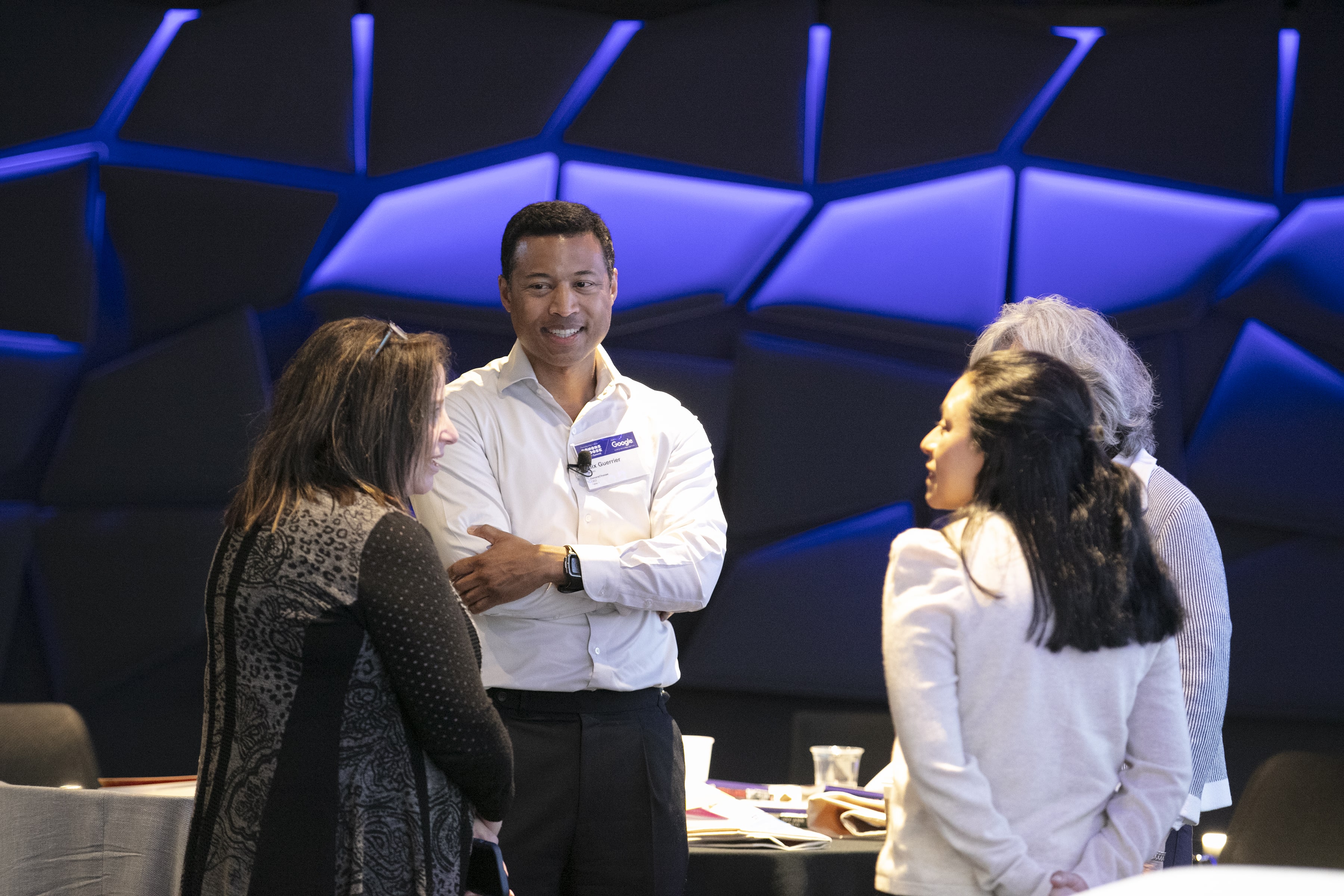
Community powers everything. Every day at DonorsChoose, we see how our incredible community of donors, partners, and teachers fuels our ability to give every student in America access to a great education. That’s why every spring, we gather our most generous supporters for two days of learning and connection.
In May 2025, we hosted Partner Summits in both New York City and San Francisco. Corporate social responsibility, education, and philanthropy leaders came together to discuss our country’s biggest education challenges and collaborate on opportunities to support public school students and teachers. One attendee said what we were all thinking: "I left feeling inspired by the stories shared, energized with new ideas for moving forward, and [feeling] more connected to the team."
Here are a few of our favorite moments from the Summits!
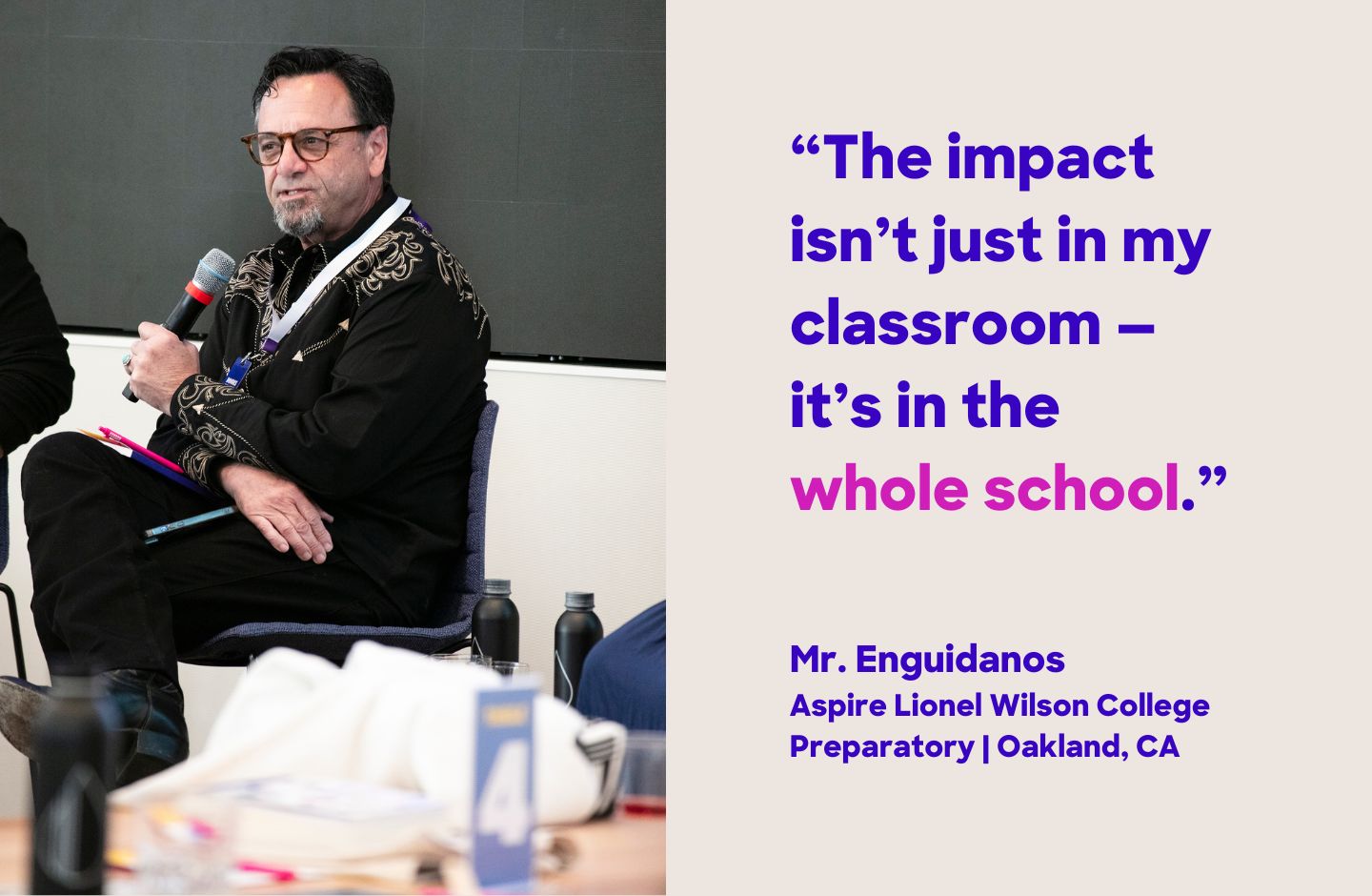
Every time we visit a school, we're reminded that classrooms are hubs of creativity and innovation. That's why our partners visited Mission High School in San Francisco and Democracy Prep Harlem High School in NYC. Students gave partners tours and got to ask them about their careers. In exchange, partners witnessed the magic of their impact up close.
The following day, teachers joined our conference to speak about their experiences as a panel, where they wowed us with their fortitude, creativity, and dedication to giving their students a great education. One attendee noted, "It was inspiring to hear from teachers who are in the schools most in need for DonorsChoose support, and to hear about the stories where donations helped fulfill a classroom need to bring an elevated learning experience to students."

By sharing their powerful backgrounds and stories, keynote speakers and fireside chats left our partners with a hefty dose of inspiration and motivation. Whether it was Tabitha Brown sharing the power of bringing joy to others, or Tulaine Montgomery speaking on leadership and social change, none of us left the conference rooms unmoved.
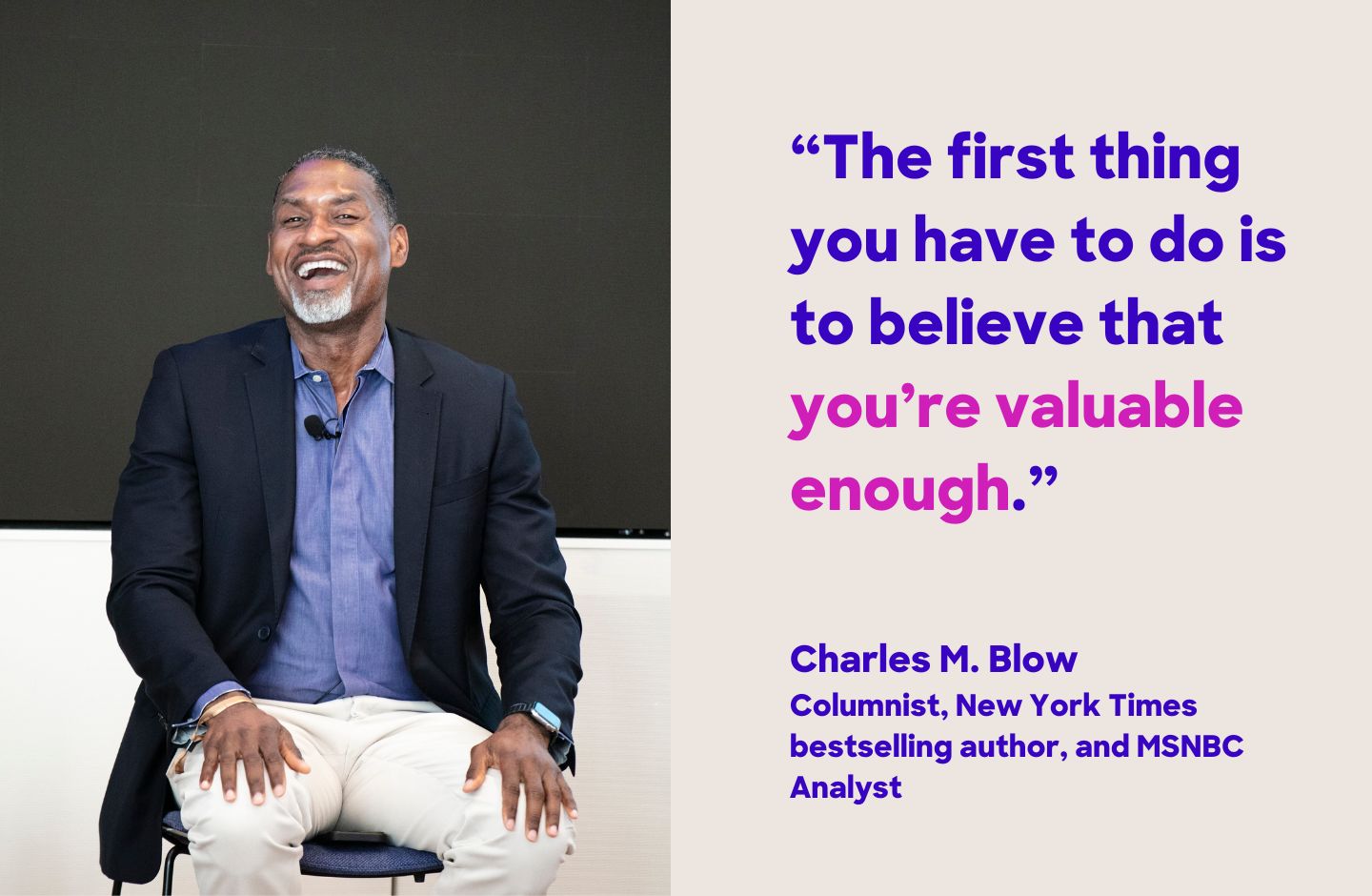
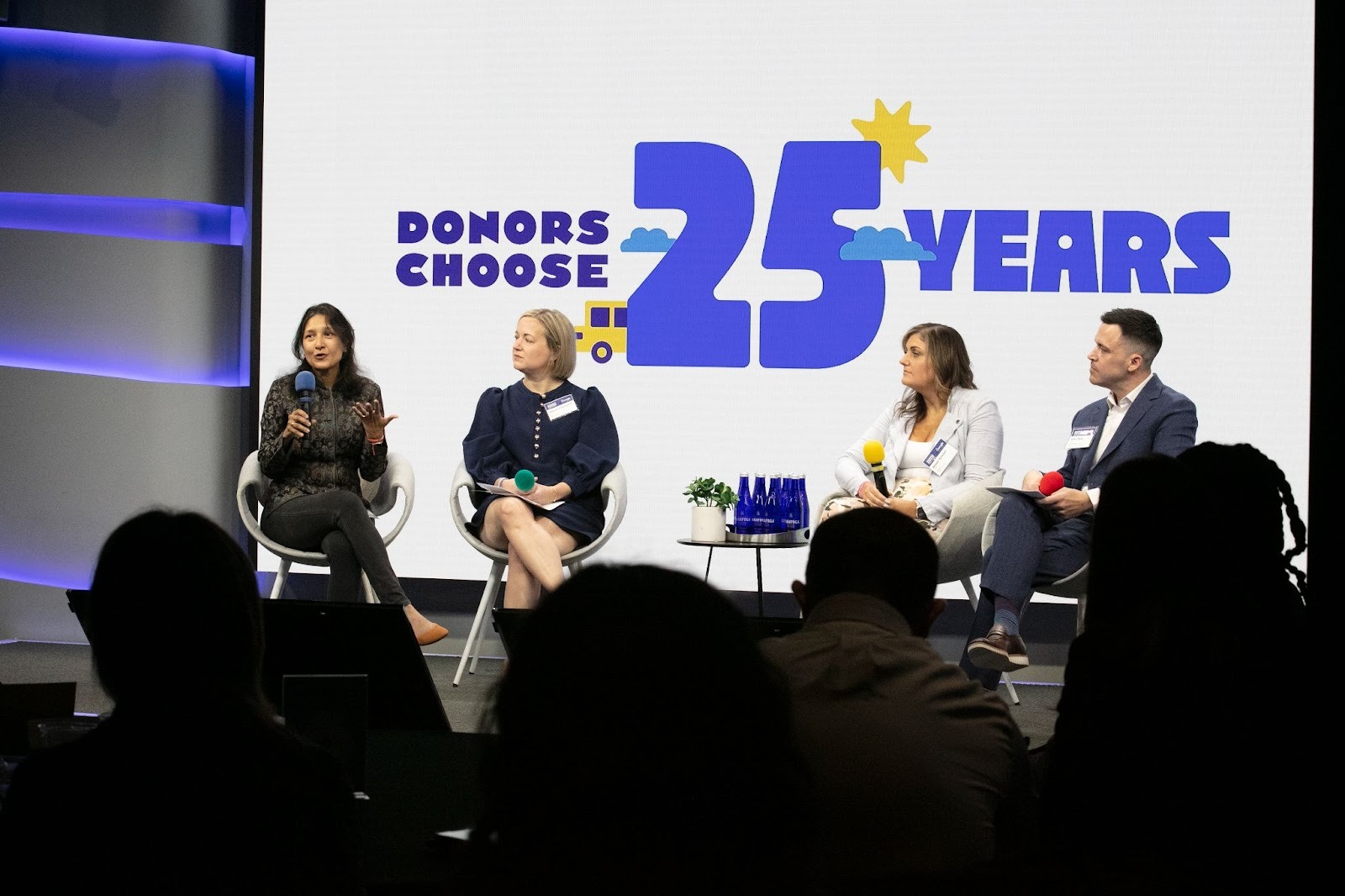
It's not very often that social good leaders making a huge difference for students be in the same room, so we wanted to make sure Partners Summit enabled just that. From networking to partner panels, attendees connected with each other and shared learnings and strategies for making a big impact. Allstate, Riot Games, and Emerson Collective shared their insights in SF, while PNC, Power for Good, and Optimum discussed learnings in NYC.
Interested in making a difference with DonorsChoose? Reach out to our team to learn how a custom partnership can help you achieve your social impact and CSR goals while helping students thrive in school and beyond.
.jpg)
A round-up of our most celebrated corporate partnerships
A corporate partnership with DonorsChoose is the easiest, most direct way to direct your support for local classrooms on a national scale. By combining targeted, hyperlocal giving with data-rich feedback, we deliver custom, branded partnerships from one of the most trusted education charities in the country. Our partnerships have received recognition as best-in-class corporate social responsibility and impact campaigns, showing that when companies partner with DonorsChoose, you give students the resources they need — all while driving bottom-line success.
Check out this round-up of the awards our partnerships have won over the years, and see what we mean!
2023 Winner | Category: Corporate/Nonprofit Partnership
Samsung's annual national competition gives students in grades 6–12 the opportunity to ask big questions and find big solutions through STEM — win up to $100,000 for their classrooms. With DonorsChoose pitching in to collaborate with vendors on prize fulfillment, Solve For Tomorrow continues to encourage students to explore, highlighting the benefits of increased funding for project-based, innovative STEM learning.
2023 Winner | Category: Corporate-Community or Nonprofit Partnership
Panda Cares, the philanthropic arm of Panda Restaurant Group, teamed up with DonorsChoose to fund 25,800 teacher projects, deliver more than 9,000 meals to classrooms, and bring the "Let's Explore! Lunar New Year" curriculum to more than 4,000 classrooms. Bonus: with more than 4,400 engagements across Twitter/X and Facebook, this partnership sparked a sense of pride and community connection!
2022 Silver | Category: Education
In 2021, Nature Made and DonorsChoose partnered to supply teachers with hand sanitizer, PPE, air purifiers, and other health and wellness resources to help keep students and teachers stay healthy. #TeachHealthy activated nearly 18,500 individual donors through the match offers, funded more than 13,000 classroom projects, and helped to position Nature Made as a brand that cares about the big picture when it comes to wellness.
Categories: Cause Marketing/CSR, Non-Profit Partnership
Forget April Fools Day: T-Mobile's campaign, #GiveThanksNotPranks, encourages people to express gratitude on April 1 instead of playing pranks, and part of that expression of gratitude meant matching donations to DonorsChoose. By donating $1 to DonorsChoose anytime someone shared a story of appreciation on social media with the hashtag #GiveThanksNotPranks and tagged @TMobile, T-Mobile directed $1,050,000 to teacher requests and garnered more than 10 million social media impressions.
2021 Silver | Category: Education
When COVID-19 presented new challenges for Samsung's annual STEM competition 'Solve For Tomorrow,' the program pivoted to become more accessible for applicants and teachers alike. Partnering with DonorsChoose meant Samsung could extend its commitment to STEM programs, creating the Samsung Solve for Tomorrow Teacher Academy with MindSpark, another DonorsChoose partner.
2021 Winner | Category: Education or Scholarship Program
Our partnership with Google.org took a two-pronged approach to make sure students across the country could see their identities reflected in their learning environment: support teachers from underrepresented backgrounds, and help bring diverse learning materials into the classroom. With 4,800 projects funded at 3,300 schools and $2 million applied to resource requests, we're proud to have helped build the impact of Google.org's #ISeeMe campaign.
2020 Gold | Category: Education
To put the power of giving directly into consumer hands, Volkswagen dealerships distributed DonorsChoose gift cards to any customer who visited during the Drive Bigger campaign, as well as fully funded classroom projects in their market areas. The result was impressive: 640 participating dealerships across the US exceeded their sales goals during the campaign period, and $233,000 was distributed through donation card funding, benefitting nearly 500,000 students across the country.
2019 Silver | Category: Education
By setting their sights on making a record-breaking donation in a single day using a digital asset (XRP), blockchain-based global payments company Ripple was able to fully fund every active project on DonorsChoose, plus an additional 10 local projects per participating employee. To make the moment even more special, DonorsChoose Board Member Stephen Colbert announced this #BestSchoolDay campaign on The Late Show.
2018 Silver | Category: Education
PNC Bank's Grow Up Great is a $350 million, multi-year, bilingual initiative in early childhood education founded by one of the nation's largest banks. To continue that work, PNC awarded a $5 million grant to DonorsChoose specifically for supporting pre-K teachers and classrooms, thereby enabling DonorsChoose to expand our platform to include project requests from Head Start teachers across the nation.
2018 Gold | Category: Employee Engagement
In order to attract and retain talented, passionate interns, PwC wanted to offer a skills-based employee volunteerism program that both allowed interns to develop their professional skills as well as have a hand in shaping PwC's giving. Partnering with DonorsChoose, PwC created five philanthropic experiments, each supported by a donation of $100,000, so that we could learn the best ways to put resources in the hands of as many students as possible.
2016 Silver | Category: Education
For Staples, school supplies are an essential component of its business. Think it Up, a national initiative to support student-powered, teacher-led DonorsChoose projects in classrooms across the country, was a natural extension of this work. With a $10 million pledge over three years, a PSA featuring Nick Jonas, and a national sweepstakes, Think It Up made a huge impact for classrooms across the country.
2014 Gold | Category: Education
After a successful first year of experimenting with different marketing strategies, General Growth Properties and DonorsChoose teamed up to take their learnings and affect major change. By targeting their shoppers with personalized communication campaigns, offering in-mall shoppers DonorsChoose gift cards as incentives for joining tiered membership levels, and hosting Celebrate Schools talent shows at every mall location, the Celebrate Schools campaign successfully brought 10,484 classroom projects to life — and 88% of the shoppers responsible for activating all that funding were first-time donors to DonorsChoose.
2013 Gold | Category: Education
Horace Mann insurance agents know that when they first focus on creating relationships with the educators they serve, providing insurance and retirement products can become a collaborating, sincere relationship. Teaming up with DonorsChoose, Turning Agents Into Educators was a cause marketing campaign that allowed agents to develop relationships and access their target customers, introducing new educators to the benefits of DonorsChoose.
2013 Silver | Category: Education
Combine Clear Channel's robust audience, Chase Bank's financial commitment to lifting up local communities, and DonorsChoose's national network of teachers in need. Roll that all into a three-month radio campaign promoting a match donation offer led by Chase on DonorsChoose that airs nationally on 850 radio stations, reaches 237 million monthly U.S. listeners, and features the trusted voices of recording artists like Pitbull and Kelly Clarkson speaking up about literacy, poverty, music education, and self-esteem. The result: a winning partnership that makes a huge impact.
2012 Silver | Category: Transactional
When JPMorgan Chase committed $500,000 to underwriting DonorsChoose gift cards that would be sold via the daily deal site Groupon, they intended the promotion to last a week. Instead, the deal sold out in under 48 hours, drawing in everybody from passionate JPMorgan employees to first-time Groupon customers (30% of which were brand new users), making this deal the fastest sell-out for a Philanthropic Deal in Groupon history.
2011 Gold | Category: Digital Marketing
When Microsoft released search engine Bing in 2009, they knew they needed to distinguish their brand from other search engines while still keeping their customers' needs at the forefront. Funding 2,711 public school DonorsChoose classroom projects across the country established Bing as the search with a conscience, earning them high marks in the Engage for Good Halo Awards.
2010 Silver | Category: Broadcast Video
Sometimes, affecting positive change in the world means meeting customers where they're at — literally. When consumers visited any SONIC during the 2009 Back-to-School Season and purchased a small Route 44-sized fountain or frozen drink, they received a code to vote online for their favorite public school teacher project on DonorsChoose, a strategy that led to funding nearly 1,500 projects and contributions of more than $630,000.
2008 Silver | Category: Transactional
This campaign had two objectives: deepen Crate & Barrel customer loyalty, and inspire civic engagement through DonorsChoose. By sending DonorsChoose gift certificates to select customers in three waves that incentivized funding the classroom project of their choice, Crate & Barrel was able to engage 15,000 customers — an extraordinary 12% direct mail response rate — and generate more than $500,000 to fund 6,000 classroom projects.
Visit our Partner Center and contact our Partner team today!

Here are the places you can make the biggest difference with your dollars
Imagine walking into a classroom where kids are sharing a single box of pencils, or where a teacher has bought snacks out of their own paycheck just to help students focus. One key difference between that reality and a world where every student has the tools and opportunities to thrive in the classroom, no matter their zip code?
Thanks to the support of an extraordinary community of generous donors and more than 25 years of experience, we’ve helped fulfill more than 3 million requests for pencils, backpacks, and essential classroom resources, putting them directly into the hands of students and teachers across the country. With top ratings from Charity Navigator and GuideStar, our site stands out for its transparency, efficiency, and direct impact so your generosity goes exactly where it’s needed — fast.
If you’ve found us here, we’re willing to bet you think teachers and students deserve the world, you want to make a real difference, and you’re among the savviest of givers. While every classroom would be lucky to have you, here are three places you can make the biggest difference with your dollars:
Public schools aren’t created equal, but you can help. Your gift has a massive impact at schools with a history of underfunding. We call these Equity Focus Schools. A donation to a project from one of these schools assures teachers that their needs are heard and valued.
No one knows your neighborhood, town, and city like you. One of the most meaningful ways to give is to invest close to home. Use our map tool to find classrooms near you. From there, you can also refine your search and get even more specific. Whether it’s flexible seating in your neighborhood middle school or math games at the elementary school your kids attend, local giving makes a lasting impact.
A warm coat. A toothbrush. A snack to keep hunger at bay. These essentials help students show up to school ready to learn and feel like they belong. “Food, Clothing, and Hygiene” projects empower students to come to school their healthiest, happiest selves. You might not think of these as traditional school supplies, but coats, nutritious snacks, deodorant, and socks are popular — and much-needed — requests from classrooms nationwide.
Every gift through DonorsChoose is a direct line to a classroom and to the students who need these supplies. Your donation purchases the exact items a teacher has requested for their students and our team fulfills the request. You’ll see where every dollar goes, receive photos and thank-you notes from classrooms, and know with certainty that you made a real difference.
Every pencil, every microscope, every paintbrush moves us closer to a world where students have the resources they need to succeed.

After over 37,000 nominations from the iHeartRadio Thank a Teacher contest powered by DonorsChoose, five public school teachers from across the United States are each winning a $5,000 DonorsChoose gift card to help fund their classroom supplies
From July 15 to August 29, 2025, DonorsChoose launched the iHeartRadio Thank a Teacher campaign with longtime partner iHeartMedia. The contest recognized public school teachers who are shaping the future and highlighted the important role that teachers play in educating, mentoring, and inspiring students, despite facing limited resources and funding challenges.
During the contest’s run, iHeartRadio invited the public to nominate outstanding teachers who are going above and beyond to make a difference in their students’ lives. Select teachers were featured on their local iHeartRadio stations throughout the month of August.
Today, DonorsChoose randomly selected five teachers to win $5,000 DonorsChoose gift cards to provide supplies for their classrooms. Below are the winners!
Nominations are still being accepted for the Winter 2026 contest of iHeartRadio Thank a Teacher. In February 2026, five more public school teachers will be randomly selected to win $5,000 DonorsChoose gift cards. Nominations can be submitted by visiting donorschoose.org/iHeartRadio and completing a brief entry form. All entries will be reviewed by DonorsChoose to verify that teachers nominated work at a U.S. public school.
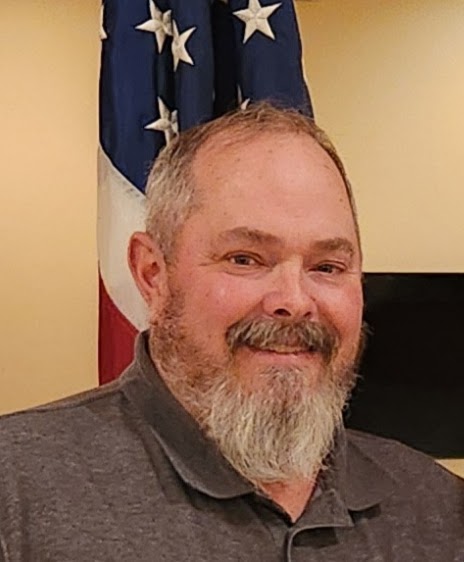
Mr. Brightbill is extremely knowledgeable in his field. Not only does he share his knowledge with his students, but he also instills giving and compassion in his students, teaching them to give back and pay it forward. He is very active at the school as well as in the community. He has the knowledge, skills, and compassion. He's just a great man and very deserving individual.

Catherine is amazing. She is always willing to help anyone and teaches students at their pace to ensure they understand the lesson. She volunteers to tutor students after school who need additional help - free of charge. She also attends the monthly School Advisory Council and PTO meetings to stay involved and provide her opinion from the teacher point of view.
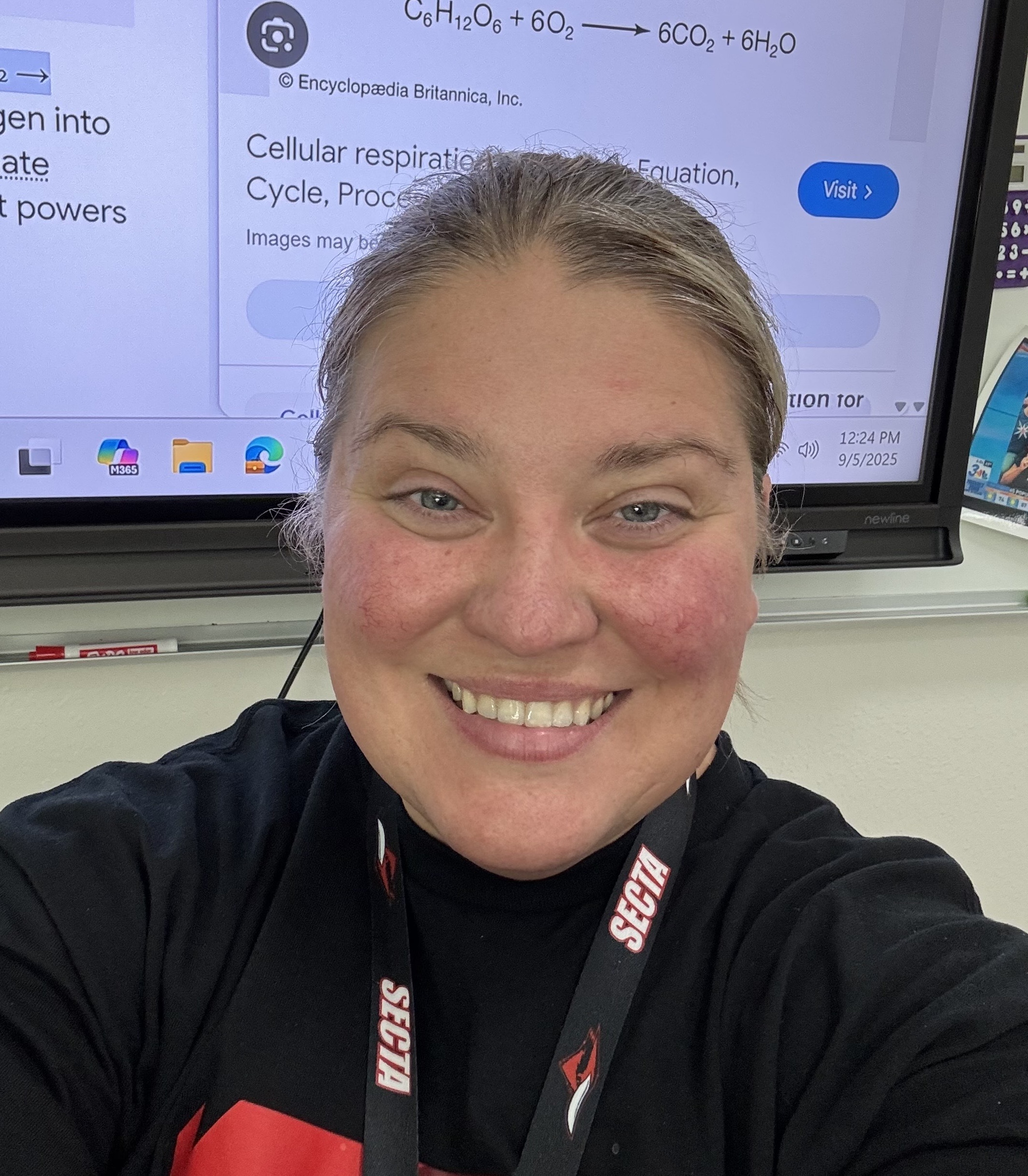
Ms. Karczewski recently moved to Southeast Career Technical Academy from Bob Miller Middle School. She is an exceptional science teacher who truly loves sharing her passion for science with her students. She has been a Science Olympiad coach for many years and mentored students who have achieved multiple awards for the Science Olympiad state competition in Nevada. She spends endless hours on the weekend and will make multiple trips to the hardware store to help students succeed in their events. She is an outstanding mentor and colleague!
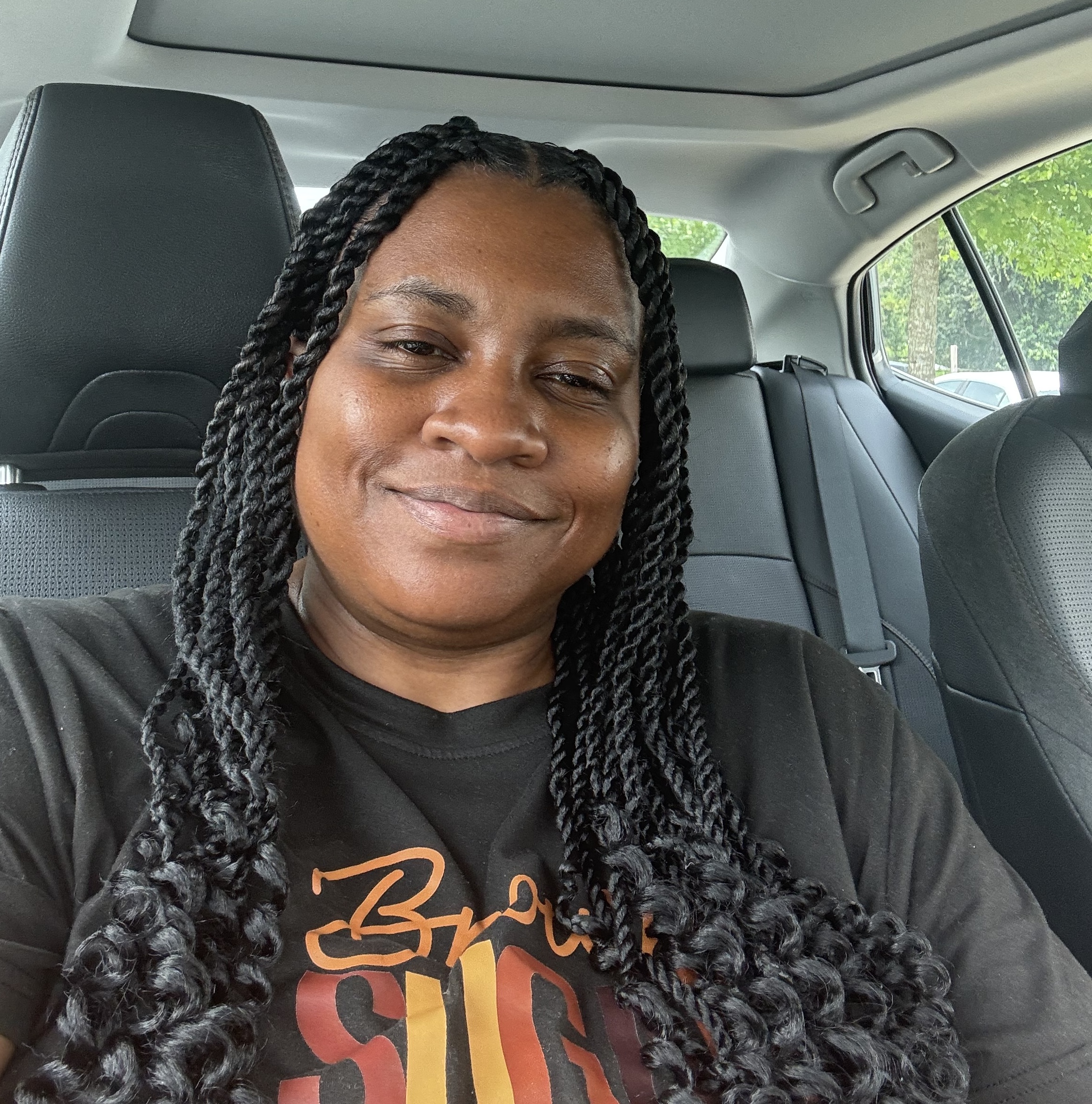
Mrs. Lancaster is an exceptional teacher. She uses her own money to provide a calm and entertaining area for her students. She treats each child like they're her own. She is a lifesaver in her community.
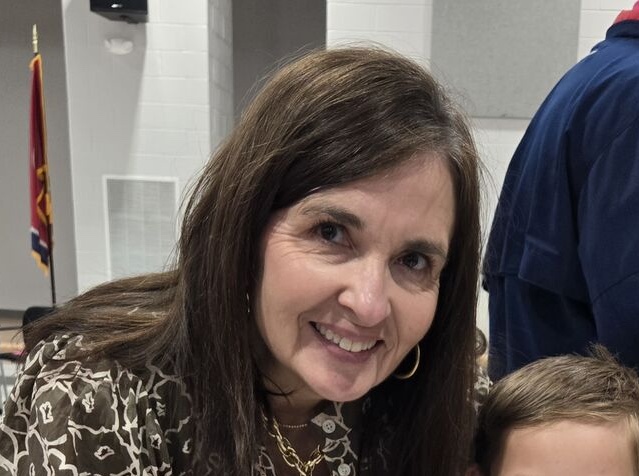
Mrs. Yonts loves all of her students. She makes every effort to ensure all of her students reach their full potential. Most importantly she runs her classroom with love, respect and discipline. Because of this, her students perform really well. Parents love her. She is one of the most requested teachers by parents and fellow teachers. This is why I nominate Mrs. Kimberly Yonts. She deserves it.
.jpg)
Download our white paper to read more.
Every day at DonorsChoose, teachers request the materials their students need to thrive, and passionate funders give to bring those classroom dreams to life. Each teacher request gives us real-time data on exactly what students need, and where the biggest resources gaps lie.
Now, we want to help state leaders turn that data into action.
This new paper, "Lessons From the Front Line: Transforming Classroom Insights Into State-Level Impact," highlights how teacher-initiated resource requests can inform state-level education policy. Our successful state partnerships in Nevada and Hawai'i prove that DonorsChoose is uniquely positioned as both a thought leader and a strategic partner for state education agencies — and that when data is put to good use, incredible learning is possible.
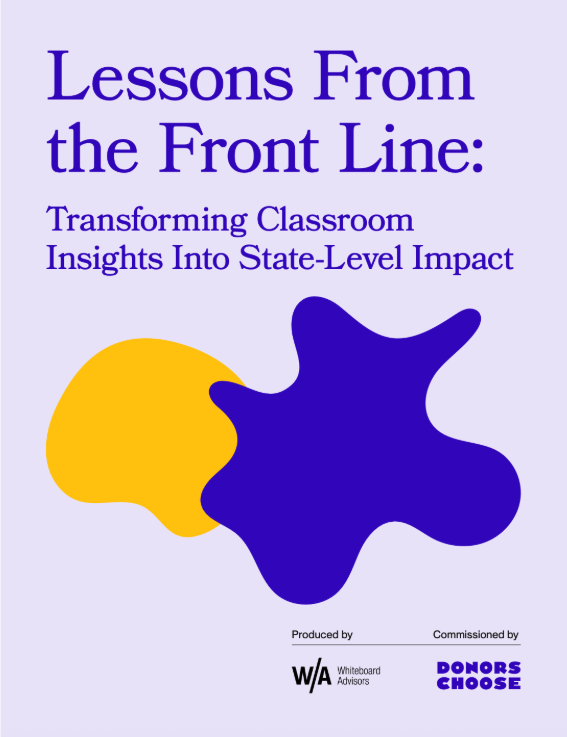
.png)
Because the real celebrities are those amazing teachers of ours, here’s how stars have shown up for DonorsChoose over the years.
You know who loves supporting public schools? Celebrities! The stars on the red carpet know they wouldn’t be where they are without the educators who ignited their passions and supported them on their journeys. As we celebrate our 25th anniversary, we’ve been thinking about how our community has shown up for students in the most remarkable of ways. Some of the memorable moments were made possible by our A-lister friends. Here’s just some of the many worth shouting out!
W. Kamau Bell — comedian, advocate, director, television host, AND DonorsChoose Board member — wowed us all this year on Celebrity Jeopardy!. With his winnings, Kamau’s first move was to fund all the DonorsChoose projects in his hometown of Oakland and his father’s hometown of Mobile, AL — but his support for education doesn’t end there either. He’s made an impact over the years as both a major donor and board member, even talking up the DonorsChoose Community on Time 100.
We can’t count how many ways Mr. Colbert advocates for DonorsChoose — both as a part of our board and as a host of The Late Show encouraging viewers to donate! One unforgettable moment? Our "Best School Day" initiative in 2016, when he brought several other icons on stage to announce flash funds to schools — including Anna Kendrick, Dwight Howard, Russell Simmons and more.
Legendary actor Samuel L. Jackson was also one of the A-listers who supported teachers and students during the same #BestSchoolsDay effort. Jackson gave to local schools in his hometown of Chattanooga through DonorsChoose for the occasion — and boosted the whole campaign with a special video too.
Serena Williams needs no introduction. She’s the GOAT for so many reasons, but our favorite is that she has personally funded numerous classroom projects on DonorsChoose, and was gracious enough to share her personal story of how education opened doors. And yep, she’s also one of the amazing celebs who helped out for our #BestSchoolDay initiative, too!
The Oscar-winning actress used her book, Sulwe, to launch a DonorsChoose campaign, aiming to provide mirrors and windows for children through diverse literature — AND partnered with us for her ISeeMe initiative, which supported classroom projects that reflect culturally responsive resources and books so children see themselves represented in their own education.
We can’t get enough of the Green Brothers and all they do for education! Author John Green and his TikToking scientist brother Hank, once supported classroom projects on DonorsChoose by melting a CD in a microwave (do not try at home!). It’s a throwback moment we love to remember.
Yvette is a DonorsChoose board member who has done a LOT of showing up for teachers and students over the years. Just this year for our 25th Anniversary, she shared her own experience using the DonorsChoose platform and lent her voice to a lovely PSA about how our site works.
Not just wildly funny, but also wildly generous. Amanda Seals has given so much time and energy to our cause as a supporter, board member — and game show winner just like Kamau. She’s secured $30,000 for classrooms through her participation on Wheel of Fortune not long ago!
We could never forget Abbot Elementary! The cast of this hit show centering teachers — written and produced by Quinta Brunson — has shown their dedication to teachers off-screen in countless ways! They’ve partnered with us for a special $1 million matching gift fund and even competed on Celebrity Family Feud for DonorsChoose. Survey says... they're truly committed to education.
The pop icon, through her Born This Way Foundation, has partnered with DonorsChoose to fund classrooms in communities affected by mass shootings — and has even gone so far as to go undercover as a substitute teacher to give $1 million (in partnership with Staples) to bring school supplies to classrooms via DonorsChoose.
Angie Thomas’s novel The Hate U Give has long been one of the most requested books from teachers posting projects on our site, with writing that shows young people how to trust their own voice and speak truth to power. She’s also directly supported our mission! During Black History Month, she even took the time to share a special message to Black educators on our socials. Thank you, Angie!
That’s right, Lady O herself is a fan of teachers and our work to support them! Years ago, "The Oprah Winfrey Show" featured DonorsChoose founder Charles Best — which actually led to enough new visitors on our website that it (temporarily) crashed from popularity! The same year DonorsChoose itself was featured on Oprah’s iconic Favorite Things List, too. 🤩
Beyond her music, Miley Cyrus is dedicated to supporting critical issues facing young people today through her Happy Hippie Foundation. In 2016, she turned that support (and her social media power) to uplift education — specifically pledging her support to help teachers on DonorsChoose and challenging others to do the same!
Launched Hopeful Hippies to act on issues we care about! I pledge 2 support education w @DonorsChoose! Share ur pledge using #HopefulHippies pic.twitter.com/ezTUKuQtms
— Miley Cyrus (@MileyCyrus) November 10, 2016
Not only does she have soul and style, she has a heart for supporting education too! Solange Knowles once partnered with Kiehl's for a limited-edition skincare line she designed — and she made sure a portion of proceeds would go to DonorsChoose, among other charities!
Entrepreneur and actress Gwyneth Paltrow has been a friend of DonorsChoose for many years, even throwing annual closet sales that have proceeds go to projects on our site. One of our favorite Gwyneth moments? When she and Stephen Colbert “re-branded” school supplies with Goop-like names to help raise money for schools on The Late Show. (Dream Twigs anyone? ✏️).
Empowering teachers and students is no (Sister) Act for Whoopi Goldberg! The famous actress and talk show host has shown up for DonorChoose teachers on more than one occasion — from supporting the #ISeeMe DonorsChoose campaign to once surprising a teacher with us on The View during a Teacher Appreciation Week!
Singer, actor, and recent Cabaret star, Adam Lambert has done a lot for students and teachers over the years — especially when it comes to helping their arts education projects get funded! He’s even recently helped raise over $220K for projects as part of a DonorsChoose Challenge he boosted across his fanship.
Of course THE Harvard Alum Elle Woods would support education! Reese Witherspoon’s history of supporting teachers is one we love to gush over. During the pandemic, she funded 142 DonorsChoose projects in her hometown of Nashville — and in 2022 she helped get books in the hands of kids through DonorsChoose in partnership with Reese’s Book Club! ☀️
The show with the Fab Five has also directly empowered educators through incredible makeovers and heartfelt funding campaigns with DonorsChoose. Using their massive platform to directly highlight the critical needs of classrooms and encouraging their own wave of followers to donate, too!
WE LOVE TEACHERS! That’s why we’re supporting @donorschoose who helps fund local arts teachers’ classrooms around the United States! Pay it forward to a new generation of teachers and students with a donation. https://t.co/UjtyweYvyD #QE4teachers pic.twitter.com/LWvme6n2k6
— Queer Eye (@QueerEye) July 22, 2019
Ed Sheeran puts his money where his pitch-perfect singing is: To classroom projects that need his endorsement! He has even donated $25,000 funding 59 arts and music projects on DonorsChoose fully. That level of generosity is music to our ears. 🎵
Nothing like a vocal powerhouse like Norah Jones also using her powerful online platform to uplift educators! Norah has graciously showcased the importance of education to her big social media following post — including a nostalgic throwback that showed love to the DonorsChoose community too!
Well-known for her role on the teen series One Tree Hill, Sophia Bush should also be known for her constant philanthropy work for teachers and students! She’s been a vocal supporter of a number of great educational organizations — and that includes personally sharing out a teacher’s DonorsChoose project for girls in STEM on her social media!
What better person to wrap this powerful list up than the Reading Rainbow King himself? LeVar Burton’s years of uplifting education (specifically with books and reading) speaks for itself. We just count ourselves lucky enough to be part of his support. He’s even personally re-shared a teachers’ DonorsChoose ask on his social media — sending heartwarming words of encouragement!
Let’s help our teachers help our kids.
— LeVar Burton (@levarburton) August 26, 2020
🙏🏾♥️✊🏾 https://t.co/FiR6EjMMyZ
Thanks again to all our famed friends out there for continuing to help the stars of the classroom shine bright, too! 💫
.jpg)
Partnering with DonorsChoose has positive impacts for employees and students alike
Teachers know: you can't figure out your dream job if no one shows you what's out there. Developing career skills in the classroom helps students imagine new realities and carve new paths for their futures, and companies have a unique opportunity to make a big difference in tomorrow's workforce. By empowering employees to support classrooms in communities that matter to them, companies not only invest in a bright future for their families and communities — they also help build up the skills of future employees.
At DonorsChoose, we're grateful to partner every year with companies aiming to do just that. For four years running, Virginia-based ASRC Federal has teamed up with DonorsChoose to run a back-to-school charity campaign in support of their employees’ most cherished communities. In total, ASRC Federal has channeled $100,000 into teachers' projects on DonorsChoose, and they've made it happen by empowering their employees to give back. Here's how they did it.
ASRC Federal has always felt a deep dedication to serving their local communities and the communities close to their employees' hearts. Four years ago, ASRC Federal decided to make it easier for employees to give back to public school teachers and students across the country. They knew they had a chance to meaningfully support the futures of local students, but bringing financial support to the many remote, rural schools spread out across America presented a challenge.
That’s why ASRC Federal began giving select employees a $100 DonorsChoose gift code, which they can use to support a DonorsChoose project that inspires them. Employees are encouraged to support projects from teachers that align with their job and career skills, as well as projects created by any teacher or community with which they are already connected.
Employee donors are also encouraged to leave messages of encouragement after they've donated, as a way of connecting personally with the classrooms they're supporting — and they often do. “The work you do with your students is exemplary. Thank you for preparing the next generation to be well-rounded citizens," says one donor comment on Mrs. Stott’s request for winter gloves.
Once projects are fully funded, DonorsChoose purchases and ships every resource directly to the classroom, eliminating the need for any logistics or shipping coordination from ASRC Federal.
With a total of $100,000 donated to projects supporting public school students over the last four years and an 80% participation rate among gift card recipients as of 2024, the ASRC Federal–DonorsChoose partnership is stronger than ever. Employees feel more connected to their communities and their work, and students are given the support they need to dream up the big futures they deserve. One employee summed up the feeling: “I live in an area of high rural poverty where even $100 can make a big difference in some of our classrooms. I’m proud to work for a company that supports this project.”
Partnering with an organization like ASRC Federal to lift up our local communities is the kind of partnership we dream of at DonorsChoose. Thank you to ASRC Federal, for making a difference in today's classrooms and tomorrow's workforce!

These 36 authors are the voices behind the empowering stories kids can’t stop talking about!
There’s something magical about the moment a book resonates with a student. It’s more than just enjoying a good story. It’s feeling connected. Finding courage. Realizing that words can be powerful and life-changing.
These 36 authors are the voices behind the stories kids can’t stop talking about; over 280,000 copies of their books have been requested by teachers and delivered through DonorsChoose. Whether they’re sparking joy, building empathy, or helping young readers discover their own strength, these authors prove that the right book can make all the difference.
Jacqueline Woodson writes with a lyrical honesty that encourages young readers to see the beauty in their own stories. Her books invite children to recognize their worth, even in moments of uncertainty or difference. In The Day You Begin, Woodson gently reminds readers that opening up can be the first step toward connection and confidence. Thanks to Woodson’s words, students learn to feel seen, valued, and brave enough to take up space in the world.
It took Thanhhà Lai fifteen years to transform her own experiences at the end of the Vietnam War into her character Hà’s journey from Vietnam to the United States. With delicate strength Lai writes in free verse of displacement, hope, and home. Her award-winning novel Inside Out and Back Again invites readers into a deeply personal journey, helping students build empathy and recognize the quiet bravery of starting over.
Author-illustrator Gaia Cornwall captures the small but mighty moments of bravery in childhood. In her debut picture book, a young boy faces his fears and takes a big leap off the diving board and into the pool, with support from his patient and encouraging father. Part pep talk, part parenting guide, Jabari Jumps helps readers see that courage doesn’t always mean not being scared — it means trying anyway.
Drawing from his own experiences with nature, adventure, and a challenging childhood, Gary Paulsen wrote dozens of books that resonate with readers who crave action and resilience. A timeless favorite, Hatchet is a survival story that captures the transformational power of solitude and the wilderness, reminding every reader that courage often comes from within. Paulsen's legacy lives on in the generations who have embraced his writing — and in his ability to help kids see that they are capable of more than they ever imagined.
Award-winning author Kwame Alexander brings poetry to life and shows young readers that language can be as dynamic and powerful as their own experiences. When the author visited Sugarland Elementary School in Virginia, he sang, rapped, and serenaded students through the highs and lows of becoming a published author. According to Sugarland teacher Mrs. Rushing, “Kwame informed my students that he was told ‘no’ multiple times when attempting to publish his first book. He never gave up, eventually becoming his own ‘yes’ when he decided to publish his own book.” That drive and bravery is the heart of each of Alexander’s novels.
Angie Thomas gives young people the language and courage to speak truth to power. Thomas’s books challenge readers to confront injustice and remind them that their voice is a force for change. Her debut novel The Hate U Give follows Starr Carter, a Black teenager who finds her voice after witnessing the police shooting of her unarmed friend — a story inspired by Thomas’s own experience growing up in Jackson, Mississippi. Through Starr’s journey, Thomas shows students that speaking out can be both painful and powerful, and that identity and community are deeply intertwined.
Jory John, a former newspaper columnist and creative writing teacher, uses relatable characters and exaggerated situations to spark important conversations. With witty narration and expressive illustrations by Pete Oswald, The Bad Seed helps children understand that everyone can make mistakes and that anyone can choose a new path.
R.J. Palacio’s characters face real challenges with honesty and bravery, showing readers that kindness and self-acceptance can lead to meaningful change. Fifth grader teacher Mrs. Bloom said of Palacio’s bestselling book Wonder, “Every once in a while a book comes along that really changes who you are, how you think, feel, react to the world around you.” Palacio’s books don’t just make better readers — they help shape thoughtful, confident young people.
Matthew A. Cherry (film director, writer, producer, author, former professional football player!) created the most successful Kickstarter ever for a short film for his project, Hair Love, which he later published as a gorgeously-illustrated children’s book. Hair Love celebrates love, pride, and family while encouraging kids to embrace who they are — especially what makes them unique. His tender story of a father who learns to style his daughter’s natural hair empowers children to see beauty in their identity and joy in self-expression.
A member of the Seminole Nation of Oklahoma and professor of law and journalism, Kevin Noble Maillard brings a rich cultural and academic framework to his heartfelt book Fry Bread. Paired with Juana Martinez-Neal’s illustrations, Fry Bread is both an empowering read for indigenous students and a beautiful window into a facet of Native American life for readers who are new to the subject.
A former reluctant reader himself, Jason Reynolds became a National Ambassador for Young People’s Literature and now connects deeply with students who may not see themselves in more traditional texts. His work Long Way Down, told in powerful free verse, explores grief, revenge, and the weight of generational trauma. Reynolds’ voice tells young readers: your story matters, and there is always more than one path forward.
In 2018, actress and author Grace Byers published I Am Enough, based on her experiences being bullied as a child for having deaf parents. Her goal was to empower children to love and accept themselves just as they are — and it’s working. Third grade teacher Mrs. Wiggins kicked off her bew student book club with I Am Enough: “One of the students who absolutely loves coming to [book club] each week is Bella. When asked why the group means so much to her, Bella said, “I am learning to be happy about my differences.”
Pam Muñoz Ryan is the 2026 U.S. nominee for the international Hans Christian Andersen Award, recognizing her significant and lasting contributions to literature — more than 40 books for children and young adults. The best place to start might be her beloved novel Esperanza Rising, which shows young readers that courage and dignity can persist through loss and change.
There’s a place for every student who’s ever felt misunderstood in Lynda Mullaly Hunt’s books. Her acclaimed novel Fish in a Tree reminds young readers that everyone learns in their own way and that great minds don’t always think alike. Fish in a Tree tells the story of a young girl with dyslexia and the teacher who helps her find her strength — inspired by the author’s own academic challenges and Mr. Christy, the teacher she says saved her.
A three-time Coretta Scott King Award-winner, Rita Williams-Garcia draws from her own background as a Brooklyn-born storyteller and longtime advocate for culturally authentic children’s literature. Set during the rise of the Black Panther movement, her book One Crazy Summer encourages readers to ask questions, seek understanding, and take pride in their heritage and history.
A first-generation Mexican American and Newbery Medal winner, Matt de la Peña writes stories that reflect the richness of working-class life and the dignity of diverse communities. His novel Last Stop on Market Street helps readers appreciate what they have, connect across differences, and see the world through a lens of gratitude and empathy. His characters often learn that joy and connection don’t depend on material wealth but on perspective and presence.
Before her career as an author, Ibtihaj Muhammad was a professional fencer and the first Muslim American woman in hijab to compete and win a medal for the United States in the Olympic Games. With co-author S.K. Ali, Muhammad offers graceful, powerful affirmations of identity and pride in her series of children’s books about wearing the hijab, beginning with The Proudest Blue. Their stories encourage young readers to stand tall in who they are and find strength in their culture and community.
Reflecting on her life growing up with diabetes, Supreme Court Justice Sonia Sotomayor offers a personal and empowering message of inclusion. Paired with López’s dynamic illustrations, their book Just Ask!: Be Different, Be Brave, Be You introduces young characters with various challenges and gifts, modeling how openness and acceptance create stronger communities. Together, the authors encourage kids to celebrate differences and ask questions with curiosity and kindness.
Nic Stone’s challenge to readers? Examine the world around you and your place in it. Stone’s Dear Martin offers a powerful, thoughtful exploration of life and identity as its protagonist grapples with the aftermath of a police shooting of a friend. High School teacher Mrs. Krieger from New York adds her endorsement: “Dear Martin gives students a voice and a means of seeing that their experiences in the world matter. I love the book and plan on teaching it until forever.”
Linda Sue Park crafts stories that illuminate persistence and inspire young readers to think beyond their own experiences. In A Long Walk to Water, based on the true story of Park’s family friend in war-torn Sudan, she brings to life the courage and determination of children facing extraordinary challenges. Her storytelling encourages students to value their own strength while developing empathy for others across time and geography.
Born in Mexico City and raised in both Mexico and the U.S., Duncan Tonatiuh brings a bicultural perspective and unique illustration style to his stories. In Separate Is Never Equal, the true story of Sylvia Mendez who fought for the desegregation of schools in California, he shows students that young people can help create structural change. By drawing on his own background and blending art, history, and activism, Tonatiuh empowers young readers to know their history, question inequality, and take pride in where they come from.
In Hidden Figures: Young Readers Edition, Margot Lee Shetterly highlights the extraordinary contributions of three Black women mathematicians at NASA, giving students powerful female role models who changed history through determination, skill, and mind-boggling intellect. As Baltimore high school teacher Ms. Chambers says, “Our students should no longer be the hidden figures, but be on the front lines for evoking change in our society.” Thanks to Shetterly, Ms. Chambers’ students (and readers everywhere!) now know and revere the names of Katherine Johnson, Dorothy Vaughan, and Mary Jackson.
Andrea Beaty studied Biology and Computer Science, worked for a software company, then turned to writing children’s books. Her stories empower curious minds through true histories that celebrate perseverance and the power of questions. In Rosie Revere, Engineer and Ada Twist, Scientist, she encourages students — especially girls — to dream big, fail boldly, and keep exploring.
Katherine Applegate writes with deep empathy and a rare ability to connect young readers to the hearts of her characters — both human and animal. In the Newbery Medal-winning The One and Only Ivan, she tells the inspired-by-real-events story of a captive silverback gorilla with such honesty and tenderness that students begin to see courage, friendship, and freedom in a whole new light. Applegate, and the characters she writes, are proof that even one voice (no matter what size) can create change.
Markus Zusak writes unforgettable stories that explore the human spirit even in history’s darkest hours. His bestselling novel The Book Thief, in which a young girl in Nazi Germany learns to read and steals books to share with others, readers are reminded of the power of words — whether to hurt, to heal, or to endure. From Mrs. Dyer, a high school teacher in North Carolina: “I believe that everyone should, at some point in their lives, experience the beauty of The Book Thief. The language is simply beyond words…My first goal was simply to open my students to the beauty of words and inspire them to love reading. The Book Thief does just that.”
A two-time Newbery Medalist, Lowry has long used her books to encourage empathy, moral reflection, and critical thinking. Lois Lowry brings history to life through stories of ordinary children who act with extraordinary courage. Number the Stars shows that doing the right thing often begins with quiet bravery. Based on true events from World War II, the story honors the Danish Resistance and the power of personal sacrifice. Her work invites students to consider how small acts of compassion can shape history and reminds them that kindness is also a form of courage.
Screenwriting dialogue master and author Drew Daywalt turned a simple box of crayons on his desk into a playful lesson on self-advocacy and collaboration. In The Day the Crayons Quit, Daywalt’s joyful, expressive missives from crayons to their owner show kids that their voices — and their creativity — matter. His book has launched art projects, reading circles, and even a play in classrooms and homes across the country.
Ashley Spires writes magnificent stories that encourage children to embrace magnificent mistakes, try again, and believe in their own ideas, no matter how imperfect they may seem at first. In The Most Magnificent Thing, she introduces a young inventor whose creative plans don’t go exactly as expected, capturing the frustration and triumph that come with problem-solving. Spires uses humor and relatable emotions to show that setbacks are not failures, but essential steps in a child’s creative process.
A strong advocate in building children's social-emotional learning skills, author Trudy Ludwig writes stories that open children’s eyes to the quiet struggles of others while helping them see their own capacity to make a difference. In The Invisible Boy, she explores what it feels like to be overlooked and how a simple act of kindness can bring someone into the light. Her books encourage students to be thoughtful and aware of the impact they have on those around them.
Jerry Craft speaks directly to kids navigating identity, expectations, and belonging. Craft’s graphic novel New Kid uses humor and honesty to help students see that they can be themselves, even when the world around them sends mixed signals. If it were up to Ms. Brinkman-Dempsey in California, New Kid would be on every classroom shelf: “New Kid is an engrossing, humorous, and vitally important graphic novel that should be required reading for young adolescence in America.”
Derek Munson’s approachable storytelling comes straight from his experiences as a dad and former youth worker, His book Enemy Pie was written to help his own children navigate tricky social dynamics. With a perfect blend of humor and heart, Enemy Pie delivers the message that getting to know someone can turn enemies into allies and even into friends.
Alexandra Penfold, a literary agent and author, draws on her experience as a mother and advocate for equity, while Suzanne Kaufman, an award-winning illustrator and former teacher, brings vibrant energy and warmth to every project. Together they create an inclusive vision of school and community in All Are Welcome. Their book reassures young readers that they belong just as they are and helps classrooms become places of kindness and celebration.
Louis Sachar captivates young readers with stories that challenge them to think deeply about fairness, fate, and the power of friendship. In Newbery-winning Holes, he blends humor and mystery with a message about resilience and justice, inspiring kids to look beneath the surface of every story — including their own. As Mrs. Hunter from Michigan points out, Sachar’s themes of grit and adventure are timeless: “The book Holes has ALWAYS been a favorite of mine, and I have been so excited to read chapters with my students every day, allowing them to get excited about the same story I fell in love with as a kid.”

Teaching philosophies are an educator's north star. Here are 9 questions to ask yourself when creating yours this year.
We don’t have to tell you: Teachers in this country do the absolute most for their students. You set up creative lessons, mentor amidst tough problems, and provide steady support through life’s everyday challenges. We’re all a bit better because a teacher guided us along the way. But what guides teachers?
One north star educators can turn to are their teaching philosophies. DonorsChoose teachers have shared how important their personal philosophies are to them. Here are 9 questions to get you started in refreshing your own. (Examples from your fellow educators included!)
1. What do you believe is the larger purpose of teaching in society? This one may seem hefty, but it’s a great place to start. Reminding yourself of your core beliefs about the “bigger purpose” of teaching can ground you as you begin defining (or refining) your personal philosophy in education.
2. Who do I want my students to be when they leave my classroom? Do you hope to create a classroom of life-long, curious explorers? Thoughtful thinkers ready to give back to the community? Creative problem solvers? Thinking about what you hope your students gain from time with you can help clarify your larger teaching philosophy.
3. If I was able to afford more resources, what would make my students’ learning experience more joyful? If there were no limits, what exactly would a dream lesson plan or classroom look like? Thinking “blue sky” like this can help bring clarity to what you value most as an educator. Bonus: It may not be as “blue sky” as you think. Remember, the DonorsChoose community is here to support your dream projects! We’ve helped teachers in 9 out of 10 public schools get supplies for their students. As you revisit your teaching philosophy, submit a project for the supplies you need to see it through.
4. What is the impact I wish to have as a teacher? As a teacher, you know that the time you spend with your students will go beyond the classroom. As you think through your guiding principles as a teacher, ask yourself what impact you do hope to have on your students' social and emotional growth.
5. What kind of learning environment do I want to create? DonorsChoose teachers are dedicated to creating inclusive learning environments so that their students feel seen, heard, and supported. What type of learning environments have this goal? For many teachers, creating a classroom library filled with books that act as “windows and mirrors” is a simple way to create a safe, nurturing environment. Check out our reading list of books that invite kids into new worlds and affirm their identities.
6. How do I approach different learning styles? What are the different learning styles you might encounter in the coming school year? Identify approaches that are well-rounded and flexible. Brainstorm what resources you may need to help your students thrive.
7. What have I learned from my experience as a teacher AND a learner? Start reflecting on your own experiences. Which of your lessons have your students simply loved? What teachers do you remember making a difference to your life? Write these down and see what they have in common.
8. What research and educational practices align best with me? Think back on what you learned during your time studying as a new teacher, books on education principles that you’ve enjoyed, and what has sparked your interest during professional development over the years.
9. What have I observed from the experiences of my students, my fellow teachers, and community? Don’t forget that your school and larger community can be a well of resources. What have parents, colleagues, and community members noted that they admire about your practice?
10. BONUS: Don’t forget to look to your fellow teachers for inspiration. Explore a few teacher-submitted projects to help inspire you. Some teachers even share about their own philosophies in their DonorsChoose projects. Here are just a few:
“My teaching philosophy is grounded in the idea that students' minds are not empty vessels waiting to be filled. Each one of them brings their own particular brand of genius to my classroom, and my most important job is to discover and empower that genius.” – Ms. D, “iPads for English Language Learners
“‘Education is the most powerful weapon you can use to change the world,’ Nelson Mandela once said. This quote is the foundation of my teaching philosophy. The students of today are the leaders of tomorrow.” – Mrs. DeTrolio, “Exploring Environmental Science through Inquiry”
“My teaching philosophy is that students learn the best when they are in a positive learning environment where they feel welcomed, comfortable, and safe with each other.” – Mrs. Blackwell, “Carpet Time for Sharing and Collaboration”
As a teacher, you are doing so much every single day to guide and support your students so they can be their very best selves. But any good guide needs a strong compass to carry with them. Having a personal teaching philosophy — that is true to who you are as an educator — is exactly that.
Want more examples from your fellow teachers? We’ve got you covered. Ready to bring your own philosophy to life with the help of our DonorsChoose community? Submit a project for your classroom today.

What are three words that describe DonorsChoose teachers? We went straight to the source — 4,574 DonorsChoose teachers — to get the answer!
When we wanted to figure out what characteristics best describe the teachers who use our DonorsChoose network — the most teacher-trusted nonprofit site for classroom funding — we went straight to the source. We asked our educator community one simple question: What are three words you would use to describe yourself as a DonorsChoose teacher? The response was overwhelming (from 4,574 educators no less!), and we're thrilled to share the findings. Brace yourself for a word cloud explosion of passion, dedication, and educator excellence in the results below! (Note: The size of each word is proportional to the number of times it was suggested.) Take a look.
What do you think? Agree? Disagree? Have a great word to add?

In case “the cloud” didn’t make it clear, here are our teacher’s top 10 responses:
The rest of the top 100 or so, in alphabetical order are (drum roll, please):
Adaptable. Adventurous. Advocate. Amazed. Ambitious. Appreciative. Awesome. Blessed. Busy. Collaborative. Committed. Compassionate. Concerned. Curious. Cutting-edge. Devoted. Different. Driven. Eager. Effecting. Empathetic. Empowered. Encouraging. Energetic. Energized. Engaged. Engaging. Enthusiastic. Exciting. Experienced. Flexible. Focused. Fortunate. Forward-thinking. Friendly. Frustrated. Fun. Funny. Generous. Giving. Growing. Happy. Hard-working. Helpful. Honest. Hopeful. Humble. Humbled. Imaginative. Inspired. Inspiring. Inventive. Invested. Invigorated. Involved. Kind. Leader. Learner. Learning. Loved. Loving. Loyal. Lucky. New. Nurturing. Open. Optimistic. Organized. Overwhelmed. Patient. Persistent. Positive. Prepared. Proactive. Professional. Reflective. Resilient. Respectful. Risk-taker. Student-centered. Successful. Supported. Supportive. Technological. Tenacious. Thankful. Thoughtful. Trustworthy. Understanding. Working.

Find a classroom near you and help teachers and students get the resources they need.
See map